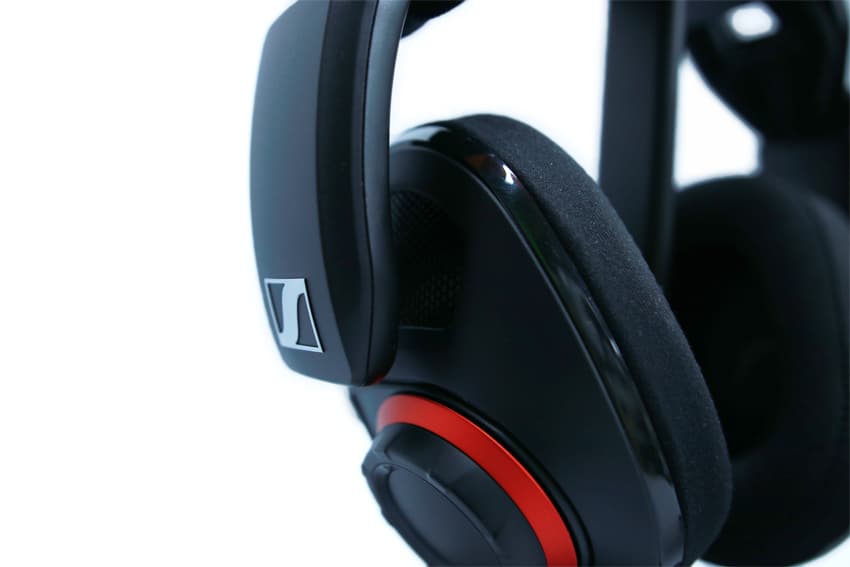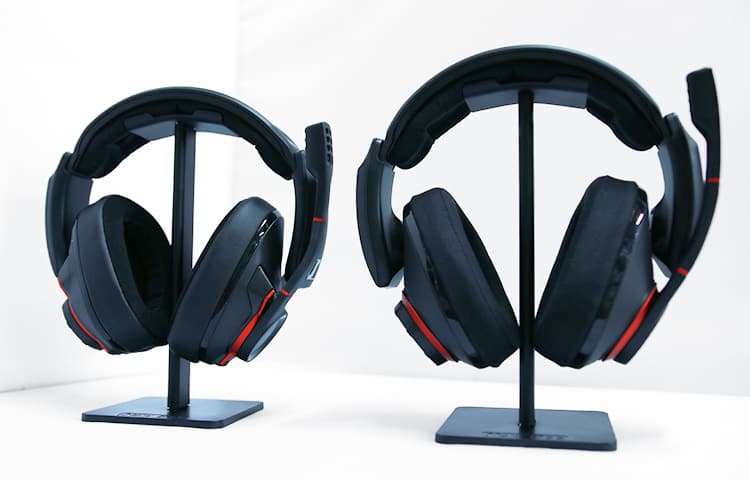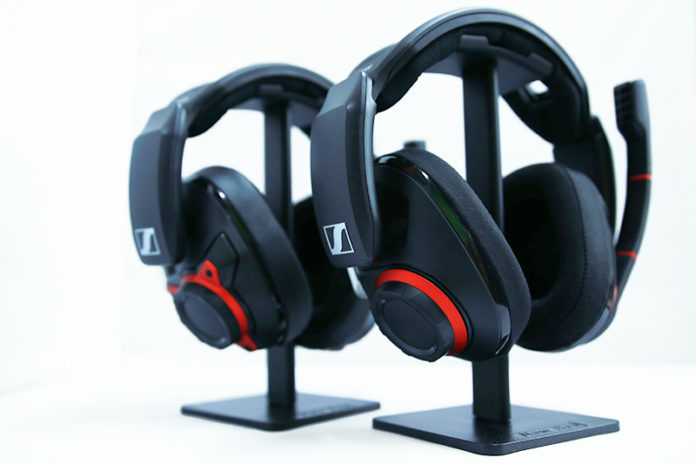As promised in my Sennheiser GSP 600 Review, I’m writing you a brief guide contrasting the differences between Sennhesier’s latest gaming headsets. The open-back GSP 500s and closed-back 600s are the latest and greatest gamer cans that the German headphone manufacturer has on the market. The two are built with nearly the same design, yet there are still differences between the two. Let’s see how they look pitted against each other.

The Fit
Both models feature customizable headband flexibility using their sliding plastic support components. Both of sets feature cups attached by a double-hinged design that allows an easy, personalized fit. Overall, they are both designed with a pretty firm grip.
I’ve seen some reviews that claim the 500 to have less focused pressure in any specific area. I experience reversed results. I found that the bottom end of my cup on the GSP 500 grips the back of my jaw much more than it does on the 600. It was unpleasant until I made some changes to the cup extension and headband strength.
What seems to be causing the difference between the two is the pads. The GSP 600 comes with firmer memory foam pads, whereas the the 500 has lighter pads made of soft fabric. The pads on the closed-back 600 have a little more bulk to them, which offers a little more space for your ear inside. It is also a slightly heavier headset, but neither model is going to weigh down too hard on your neck. The 600’s pads are also lined with a soft suede-like material that is meant to guard you from getting stuck to them with sweat. Of course, the 500 doesn’t necessarily need this detail as much since the open-back cans are less likely to get you sweaty in the first place.

The Sound
Both pairs of cans are built with a low impedance of 28 Ω , so that they can be driven easily by any computer or gaming controller. As far as I know, they feature the same dynamic drivers. According to Sennheiser’s official spec list, the 500 offers lower sound pressure (a measurement of 107 dB SPL @ 1 kHz, 1V RMS vs the GSP 600’s 112 dB SPL @ 1 kHz, 1V RMS). The open back of the 500 allows sound to escape, and provides slight relief towards loudness exposure.
In terms of frequency balance. The GSP 500 is predictably lighter. No range goes in too heavy or harsh. The bass is extended in both models, yet appears more modestly in the 500s. Their low end will pick you up for a date, pay for the dinner, and walk you to the door afterwards.
The GSP 600s have the same low range threshold (10hz) but are a little bolder in presence. There is a punchiness to the deeper sound that doesn’t get muddy or boomy, but is unafraid to be stated in the overall sound. There is no detail missing in any range of these headphones, and the isolated fit of the cups locks you in to hear them all.
The soundstage is wider on the GSP 500s. As much is to be expected from an open back. Despite having a general lighter sound, they are large in the space they provide. The GSP 600s are still not lacking a soundstage. For closed-backs they actually really impressed me here. Still the 500s have the larger stage and that’s that.

Last Look
I found their differences to be minimal, but the 600 worked for me. However, I’ve seen mostly opposite reactions from other people. Technically, the open back would be better for extended periods of gaming, since they give your ears some air to cool off. The sound is also is a little less intense on your ears since it can escape the chassis. The GSP 600 fit my head better than the 500 did, but it was a small difference.
If you like your games life-like go with the GSP 500. If you like your games larger-than-life, go with the GSP 600. Grab the 500s if you want to be aware of your IRL surroundings, otherwise be trapped in your game with the 600s. That’s pretty much it.
Oh yeah, and the GSP 500 costs $20 less at $229.95.
Sounds good?
Click the links below for the best deals on Sennheiser and more:
MAJORHIFI may receive commissions from retail offers.








